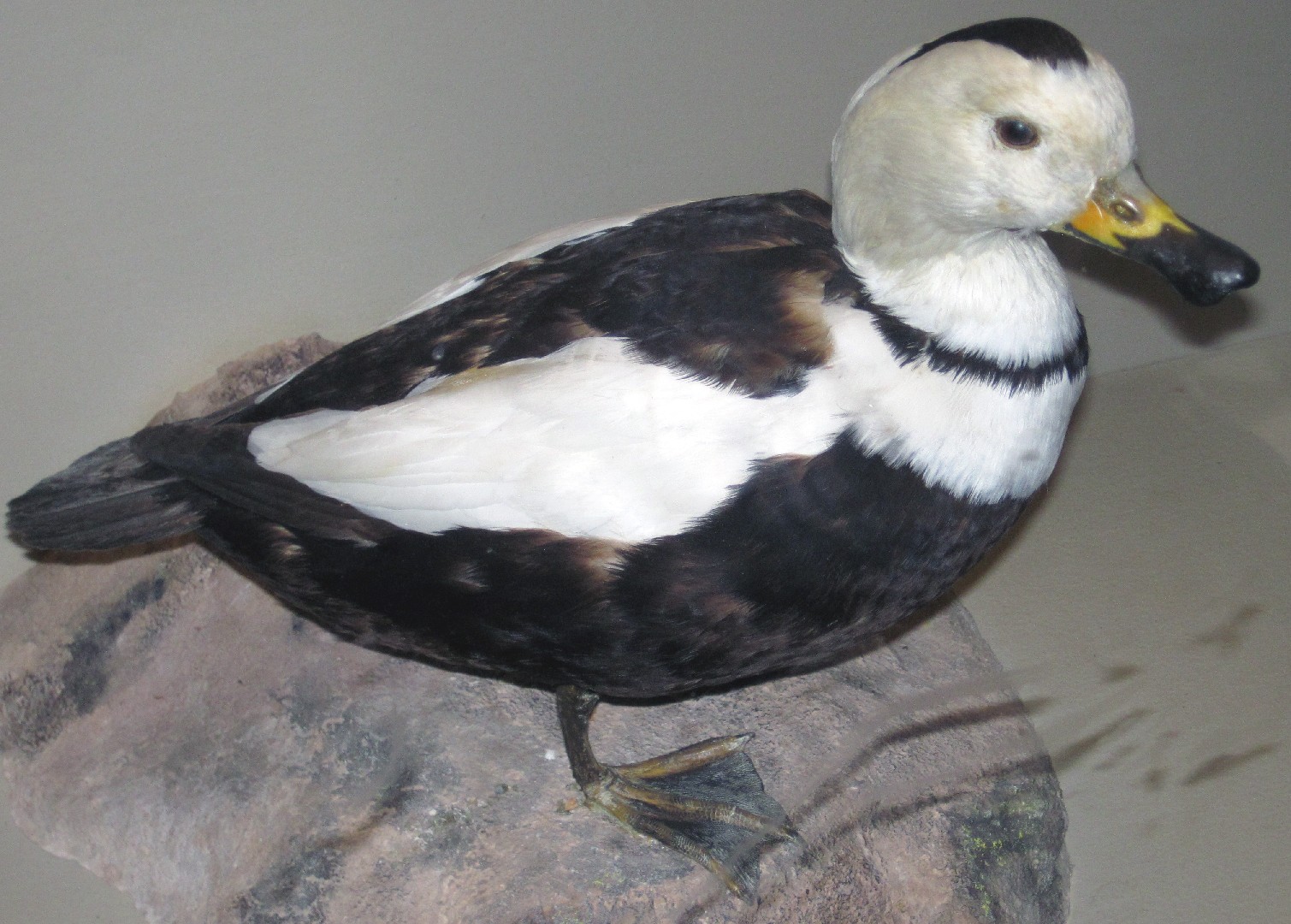Labrador Duck
A species of Labrador Ducks Scientific name : Camptorhynchus labradorius Genus : Labrador Ducks
Labrador Duck, A species of Labrador Ducks
Botanical name: Camptorhynchus labradorius
Genus: Labrador Ducks
Content
Description General Info
Description
The female plumage was grey. Although weakly patterned, the pattern was scoter-like. The male's plumage was black and white in an eider-like pattern, but the wings were entirely white except for the primaries. The trachea of the male was scoter-like. An expansion of the tracheal tube occurred at the anterior end, and two enlargements (as opposed to one enlargement as seen in scoters) were near the middle of the tube. The bulla was bony and round, puffing out from the left side. This asymmetrical and osseus bulla was unlike that of scoters; this bulla was similar to eiders and harlequin duck's bullae. The Labrador duck has been considered the most enigmatic of all North American birds. The Labrador duck had an oblong head with small, beady eyes. Its bill was almost as long as its head. The body was short and depressed with short, strong feet that were far behind the body. The feathers were small and the tail was short and rounded. The Labrador duck belongs to a monotypic genus. 
Nest Placement
Ground
Feeding Habits
Labrador Duck primarily consumed small molluscs, using its unique, wide, and flattened bill to probe sediment and sift through shallow waters. Its specialized bill contained lamellae to filter food, indicating a diet consisting mostly of shellfish and crustaceans.
Habitat
The Labrador duck migrated annually, wintering off the coasts of New Jersey and New England in the eastern United States, where it favoured southern sandy coasts, sheltered bays, harbors, and inlets, and breeding in Labrador and northern Quebec in the summer. John James Audubon's son reported seeing a nest belonging to the species in Labrador. Some believe that it may have laid its eggs on the islands in the Gulf of Saint Lawrence.The breeding biology of the Labrador duck is largely unknown. 
Dite type
Piscivorous
General Info
Feeding Habits
Bird food type
Species Status
The Labrador duck is thought to have been always rare, but between 1850 and 1870, populations waned further. Its extinction (sometime after 1878) is still not fully explained. Although hunted for food, this duck was considered to taste bad, rotted quickly, and fetched a low price. Consequently, it was not sought much by hunters. However, the eggs may have been overharvested, and it may have been subject to depredations by the feather trade in its breeding area, as well. Another possible factor in the bird's extinction was the decline in mussels and other shellfish on which they are believed to have fed in their winter quarters, due to growth of population and industry on the Eastern Seaboard. Although all sea ducks readily feed on shallow-water molluscs, no Western Atlantic bird species seems to have been as dependent on such food as the Labrador duck. Another theory that was said to lead to their extinction was a huge increase of human influence on the coastal ecosystems in North America, causing the birds to flee their niches and find another habitat. These ducks were the only birds whose range was limited to the American coast of the North Atlantic, so changing niches was a difficult task. The Labrador duck became extinct in the late 19th century. 
Scientific Classification
Phylum
Chordates Class
Birds Order
Waterfowl Family
Geese Genus
Labrador Ducks Species
Labrador Duck 